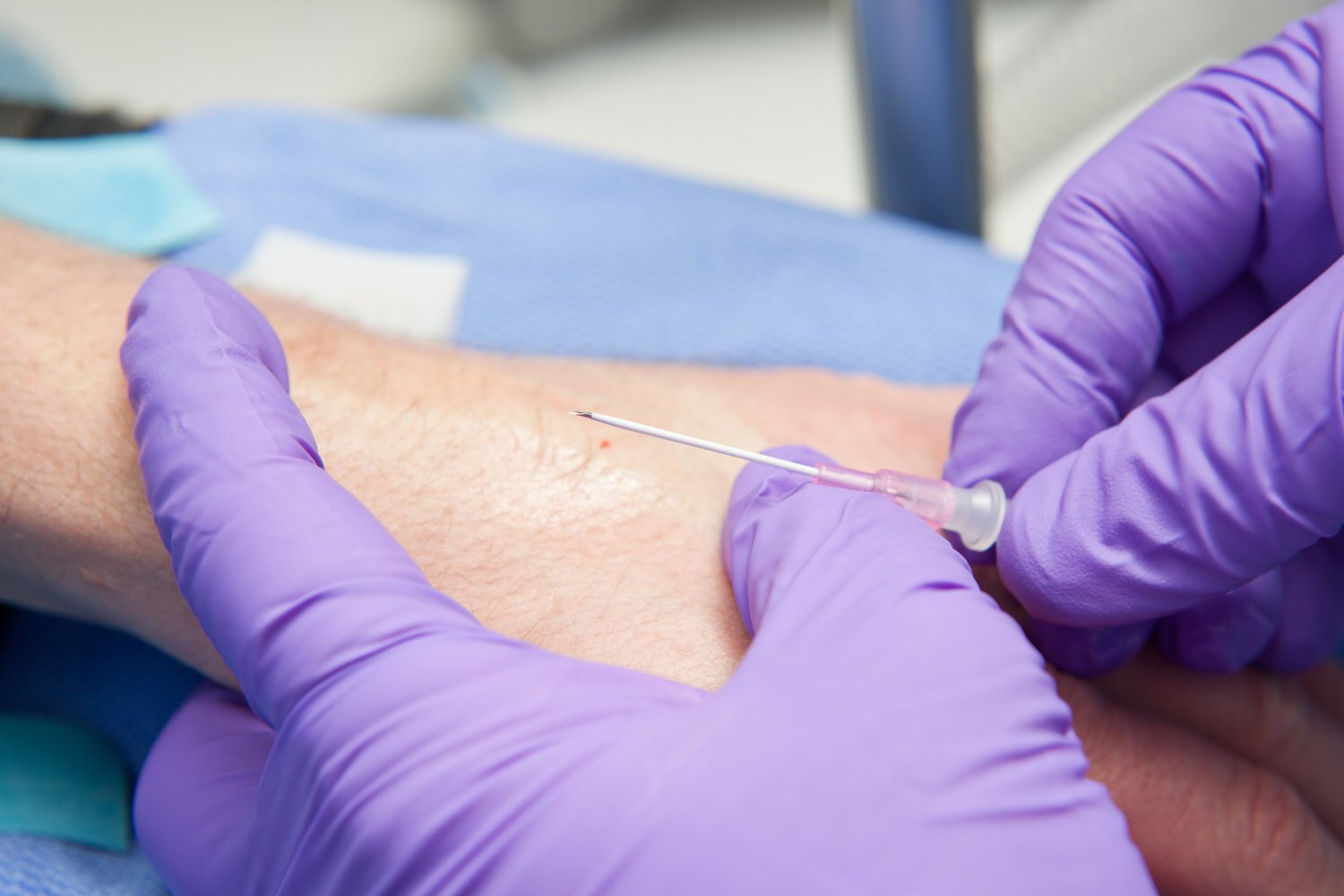
IV FAILURE AND COMPLICATIONS
Peripheral IV Failure
IV lines are stressed each day they are in use. During normal activities of daily living, tugs and pulls on the IV line occur and are largely unavoidable. These forces can be transmitted to the dressing, surrounding skin, and/or the IV catheter that is in the vein. Some levels of force are acceptable and others reach a point where they become harmful to the IV and can lead to failure of the line. Clinical studies show us that on average, IVs fail 46% of the time in major clinical centers before the IVs reach the end of their intended use.(1)
46% is an astounding number. Helm et al performed a review of all the available literature and published in May/June 2015 an article titled, "Accepted but Unacceptable: Peripheral IV Catheter Failure" in the Journal of Infusion Nursing. When the authors reviewed the literature for all of the randomized controlled clinical trials, they found nine studies to analyze. These studies were done in major medical centers with dedicated IV teams performing the procedures. The failure rate ranged from 36 to 63% with an average of 46%. (1) If this is the rate at major medical centers, what is it in the average hospital?
Mechanical Forces On IV Lines
Below are pictures of a standard IV adhesive with different amounts of force applied on the IV line. Most adhesives completely pull off the skin between five and eight pounds of force (2). It is impossible to eliminate all the forces that might pull on an IV line and some smaller forces, like those associated with activities of daily living, are normal. There is a point at which forces turn harmful and can shorten the lifespan of the IV.
SafeBreak Vascular is designed to separate at 4 pounds to release the harmful force from the IV line. Keep in mind that the arm shown in the pictures below is a 50 year old male’s arm. The amount of skin tenting shown at each level of force would be even more dramatic in a 70 year old male or female.
Common IV Complications
There are four common complications that occur with peripheral IVs: Infiltration, Phlebitis, Dislodgement, and Occlusion. With all of these complications, harmful forces on the IV line are a major precipitating factor. The four complications related to mechanical forces are described below.
Patient dislodging IV due to cognitive issues
A hand showing infiltration of an infusate into the soft tissues by a peripheral IV
A forearm with an example of phlebitis
Patient dislodging IV because the line is under the hospital bed rail
Helm Study IV Complication Rates Overview
Infiltration
Infiltration is the most common complication for peripheral IVs, occurring 24% of the time on average.(1) Infiltration occurs from erosion or penetration of the catheter into or through the vein wall. It results in the infusion of medicine into the surrounding soft tissues as can be seen in the image below. The erosion of the vein wall can be caused by forces on the IV line causing the IV catheter to move back and forth in the vein, injury due to the caustic medicine being infused, or needle injury to the vein during insertion. Securing and preventing harmful forces from moving the catheter back and forth are critical in preventing infiltration.
Simulation of what can happen inside the vein when infiltration of a peripheral IV catheter occurs.
Phlebitis
Phlebitis, or vein irritation as seen in the picture below, occurs 15% of the time on average in peripheral IVs and is the second most common mechanical complication.(1) There are three different types of phlebitis: mechanical, chemical and infectious, though any combination of the three can occur. Mechanical phlebitis is caused by the traumatic movement of the IV catheter against the vessel wall, and chemical phlebitis is caused by a reaction of the vein to the medication that is being infused.
Simulation of what can happen inside the vein when phlebitis occurs with a peripheral IV
Dislodgement
Dislodgement occurs when forces across the IV line are stronger than the adhesives’ and securement devices’ ability to hold onto the IV line, making it a purely mechanical complication. Clinical studies show that IV dislodgement is a common complication, occurring 7% time on average.(1) Dislodgement can occur either on purpose or accident with some of the most common reasons being: patient transfer from one bed to another, patients with cognitive issues unknowingly pulling out their IV, and IV lines getting caught underneath hospital bed rails.
Occlusion
Build up of biological material can cause peripheral IVs to occlude. Occlusions occur when the opening of an IV catheter becomes blocked due to the build up of biological material at the tip. Occlusions are responsible for 19% of all IV catheter failures.(1) If the IV catheter is pulled back and forth inside the vein, this can cause the catheter to scrape and gather material from the inner wall of the vein at the tip or opening of the catheter. Reducing the movement of the catheter in the vein can help prevent the build up of materials on the catheter that lead to occlusion.
Build up of biological material can cause peripheral IVs to occlude
Important Vascular Access Studies
Reaching One Peripheral Intravenous Catheter (PIVC) Per Patient Visit With Lean Multimodal Strategy: The PIV5Rights™ Bundle - Lee Steere, RN, CRNI, VA-BA – Unit Leader, IV Therapy Services Hartford Hospital, Connecticut
Accepted But Unacceptable: Peripheral IV Failure - Robert E Helm, Jeffrey D Klausner, John D Klemperer, Lori M Flint, Emily Huang
Click On The Images Below To Access Additional Peripheral IV Catheter Resources.
1 Helm, R.E., et al., Accepted but Unacceptable: Peripheral IV Catheter Failure. Journal of Infusion Nursing. 2015; 38(3):189-203.
2 Data on file
MKG-0009 Rev 02










